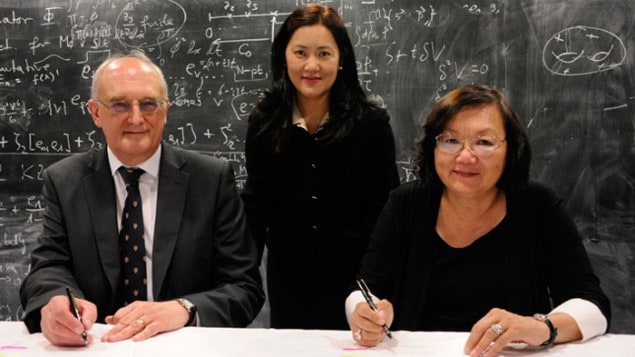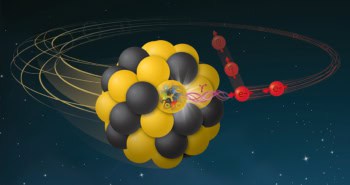
A new chair designed to lure the world’s brightest minds in cosmology to the University of Cambridge has generated a heated debate among physicists at the institution. Supporters of the Stephen W Hawking Professorship, set up in the Department of Applied Mathematics and Theoretical Physics (DAMTP), say that the $6m (£3.6m) that accompanies the new position will allow the university to compete with the richest US institutions when hiring top scientists. Critics, however, argue that in agreeing to an unusual set of conditions attached to the donation, the university has placed financial gain ahead of meritocracy and has undermined its independence.
The position was made possible by a donation to the university by the US philanthropist Dennis Avery, heir to part of a fortune made in the commercialization of sticky labels, and his wife Sally Wong-Avery. A long-time friend of Hawking, Avery announced that he would fund the new professorship at the astrophysicist’s 70th-birthday celebrations in January 2012. This was the latest in a series of donations to the university by Avery that include support for his alma mater Trinity Hall and a 2006 gift of £1m used to create a new centre for theoretical cosmology within the DAMTP.
“Equal to or greater than the average salary”
The new donation includes $2m that is being given to the university to set up an endowment fund that will provide some of the new professor’s basic stipend. This salary, according to the deeds, must be “equal to or greater than the average salary and benefits received by other professors of similar years of service, or rank” within the DAMTP. The remaining $4m will be controlled by a group of trustees – three senior university officials and Avery’s stepdaughter Natasha Wong. This cash will then be used to top up the salary by as much as the trustees deem necessary to hire or retain the candidate of choice – up to a maximum of 2.6% of the capital (which today would mean about £67,000).
Although there is no fixed salary for the position, it is likely to be in the region of twice the value of the basic salary for a professor at Cambridge. The new chair is also atypical in that it has an expiry date – the professor being appointed initially for seven years, and then for a further possible five or 10 years. After stepping down from the Hawking position, the holder would then be guaranteed a regular professorship until they retire.
Highly charged
Senior members of the university had begun negotiating the terms of the deal with Avery before he died unexpectedly in the summer of 2012. Faced with the stark choice of accepting the money with all of the strings attached or rejecting what would have been a welcome boost to departmental coffers, academics discussed the issue in a highly charged meeting of the university’s governing Regent House on 14 January.
The Cambridge University Reporter recorded DAMTP biophysicist Raymond Goldstein as saying at the meeting that he was struck by the “financial, legal and semantic gymnastics” used in the deeds to justify partitioning the $6m, which, he argued, was designed to “circumvent the normal salary structures of the university to guarantee a specific and outsized benefit to the chair holder”. Goldstein added that he was “almost speechless” at the requirement that the Hawking professor’s basic salary be at least as great as that of their colleagues, pointing out that this could grant the professor a pay rise whenever another member of the department earned an increase. “This cannot be fair,” he told those at the meeting. “I thought we strove to have a meritocracy in this university.”
Indignity of reassessment
Another member of the DAMTP, fluid-dynamics expert Adriana Pesci, argued at the meeting that the new chair could threaten departmental funding if several former holders were to co-exist within the department. She also claimed that the need to assess the Hawking professor after seven years represented an “indignity” for that person, and warned that “this could become the precedent necessary to justify instituting post-tenure review for everyone”.
In the end, the numerous concerns voiced by critics were not quite enough to halt the plans. On 25 February the university announced that 746 members of Regent House had voted in favour of the proposals and 606 against. The professorship then came into effect on 1 March. However, the trust’s rules seem to imply that no-one will be appointed while Hawking remains director of research at the DAMTP. Hawking will be supported by the trust’s core endowment, although it appears he will not receive any supplementary salary from the donation. In an open letter he wrote in February, Hawking urged fellow academics to vote in favour of the professorship, adding that he intends to continue his DAMPT directorship “under the same conditions as currently”.
Split in two
Speaking to Physics World, DAMTP head Peter Haynes acknowledges that the terms of the donation “were not straightforward”, but he believes that they can nevertheless be made to work “in a way that doesn’t go outside the spirit of the regulations of the university”. He says that the interest generated on the $2m will not be enough to cover the professor’s basic stipend and explains that the shortfall could be made up by recruiting one fewer lecturer. He remains confident, however, that the professorship will not drain other resources from the department. He admits that he does not “totally understand” why the fund was split into two, but decided that nonetheless the donation was a good thing. “One lump sum would have been simplest,” he says, “but you have to decide whether the enormous opportunities offered by the donation outweigh the potential complications.”



